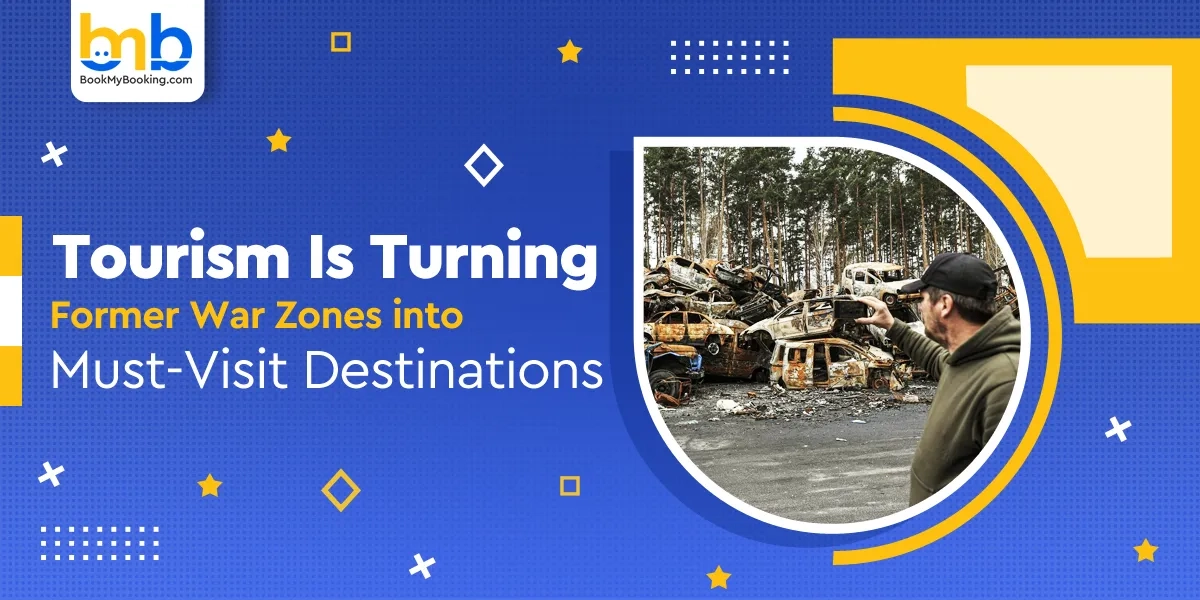Once places of unimaginable pain, suffering, and destruction, many former war zones undergo a quiet yet profound transformation. What were once frontlines are now walkways for curious, thoughtful travellers seeking more than sun and sand. This emerging trend is known as war tourism, where travel is about understanding history, resilience, and the human capacity to rebuild.
The idea might sound controversial at first, but when done respectfully, visiting places that witnessed conflict can become an educational, even healing, experience for both tourists and locals. These aren't just dark tourism destinations focused on tragedy—they are stories of rebirth, courage, and regeneration. From Sarajevo's bullet-scarred buildings to Rwanda's genocide memorials, travellers are re-evaluating what meaningful travel means.
The rise of travel to former war zones is reshaping what we consider "attractive." It's no longer just pristine beaches or iconic landmarks. Increasingly, global explorers are drawn to unusual travel destinations that offer raw authenticity and a deeper connection to the past. This trend is no longer fringe. It's now a fast-growing part of the global travel industry, embraced by tour operators, governments, and a new generation of mindful travellers.
We're about to uncover how something once defined by destruction is now part of a powerful regeneration narrative. This story begins with war, but ends with understanding and renewal.
Why "War Tourism" and Dark Tourism Hotspots Are Booming
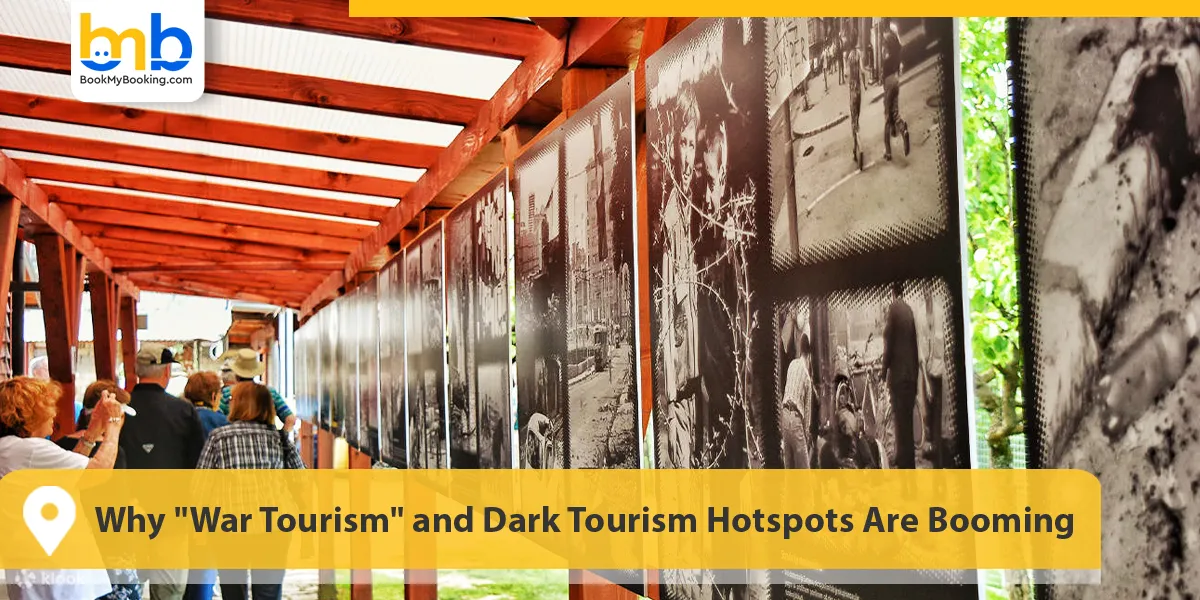
A decade ago, intentionally visiting a war-torn country would have been unthinkable for most travellers. Today, however, war tourism is no longer a fringe fascination. It's a rising sector within the travel industry that blends history, human stories, and social consciousness. Why is this shift happening now?
There are several reasons behind the boom in dark tourism destinations. First, the modern traveller is looking for more than just a checklist of attractions. They crave experiences that are authentic, educational, and emotionally engaging. Historical understanding, particularly of war and peace, is increasingly important to cultural literacy. This shift in mindset has turned places like Sarajevo, Hiroshima, and Kigali into must-visit locations and not despite their pasts, but because of them.
The rise of travel to former war zones is also fueled by better access. These destinations have become safer and more accessible due to improvements in infrastructure, government efforts to promote peace tourism, and the presence of local guides and interpreters. In Bosnia and Herzegovina, for example, war-themed walking tours around Sarajevo's Sniper Alley and Tunnel of Hope are conducted by survivors who offer deeply personal perspectives. These kinds of stories turn a destination from a location into a living, breathing history lesson.
And let's not ignore the role of the media. Social platforms, documentaries, and podcasts have spotlighted the resilience of communities that once faced annihilation. As these stories circulate, they spark interest, and people now want to witness nature and survival.
Importantly, many of these countries are now branding themselves as emerging travel destinations. They're promoting not just their war history but also their rich cultures, landscapes, and traditions. Consider Rwanda again: yes, it's home to the Kigali Genocide Memorial, but it's also one of the world's top places to go gorilla trekking. Similarly, Vietnam has both the Cu Chi Tunnels and world-class beaches. The war is a chapter, not the whole story.
A key driver in this evolution is the transformation of once-dangerous zones into dark tourism hotspots. These places now attract historians, journalists, curious travellers, educators, and students. The place signifies war; people want to remember it by seeing the traces left behind, acknowledging what happened, and learning from it.
It's also a movement that encourages a different pace of travel. You are encouraged to listen, reflect, and often contribute through community donations, purchasing from local artisans, or spreading awareness. In this way, post-conflict tourism is evolving into something more profound: a collaboration between the past and the future.
Reborn Travel Destinations from Past Conflict: The Transformative Era
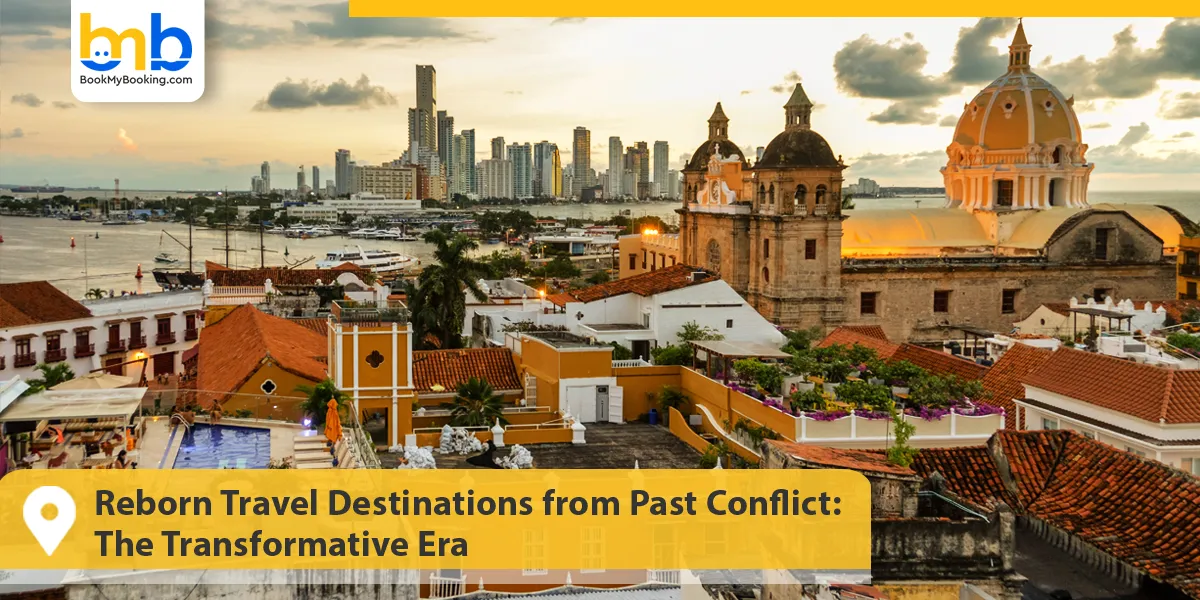
The way that post-conflict tourism helps turn former battlegrounds into prosperous, frequently tranquil travel destinations is among its most encouraging features. Through culture, community involvement, and international connections, these previously violent and traumatised locations are redefining their identities. They're getting better and letting the world see how they've changed.
Take Colombia, for example. For decades, it was synonymous with civil war and cartel violence. Today, it is one of South America's most exciting emerging travel destinations, especially in areas like Mesetas, once under FARC control. With the 2016 peace accord, entire regions opened to tourists for the first time. Instead of bullets, you now hear the sounds of waterfalls and birdsong. Local guides—many of whom were former fighters—now lead hikes through pristine forests and kayak tours along the Güejar River. It's a robust case of travel after war, changing local livelihoods and international perceptions.
This development is directly linked to nation-building. Post-war economic recovery tourism creates real jobs, boosts local pride, and often redirects economies that once depended on aid or black-market trade. There is a ripple effect for every traveller who dines in a local restaurant, hires a community guide, or stays in a family-run guesthouse. And importantly, these experiences feel authentic, because they are.
Another striking example is Rwanda. Once infamous for the 1994 genocide, the country is now globally respected for its rapid recovery, reconciliation efforts, and environmental leadership. Kigali, the capital, is one of Africa's cleanest and safest cities. The Kigali Genocide Memorial welcomes thousands of visitors annually as a site of remembrance and a lesson in humanity. What was once a country torn apart has become a standout in ethical conflict tourism, where education, emotion, and healing intersect.
Similarly, Kyiv, Irpin, and Kharkiv in Ukraine are seeing the early signs of becoming future reborn travel destinations. Even as conflict continues in some parts, tourism initiatives are cautiously developing in areas declared safe. Some tour operators offer city tours that showcase resilience: bombed buildings, community gardens built atop rubble, murals that have transformed ruins into canvases of hope. Here, transformative war history trips are real-time. The past isn't frozen in museums; it's walking beside you in the form of survivors, volunteers, and artists.
Tourism has become a tool for social, psychological, and economic healing in these places. It affirms the views of people who have experienced the conflict. It gives people a way to tell stories. Additionally, it forges connections between cultures that might not have otherwise come into contact.
All of this falls under the growing umbrella of former conflict zone tourism, a form of travel that's curious and conscious. It demands engagement, humility, and openness from visitors. It's not about taking photos for Instagram. It's about understanding the cost of peace.
We must also acknowledge how vital community consent is in this transformation. Healing is not linear, and not every place is ready for visitors. However, in areas where local leaders, historians, and survivors invite people, tourism becomes something more than just an industry. It becomes a dialogue.
Real-World Case Studies: Where Tourism in War-Torn Countries Is Working
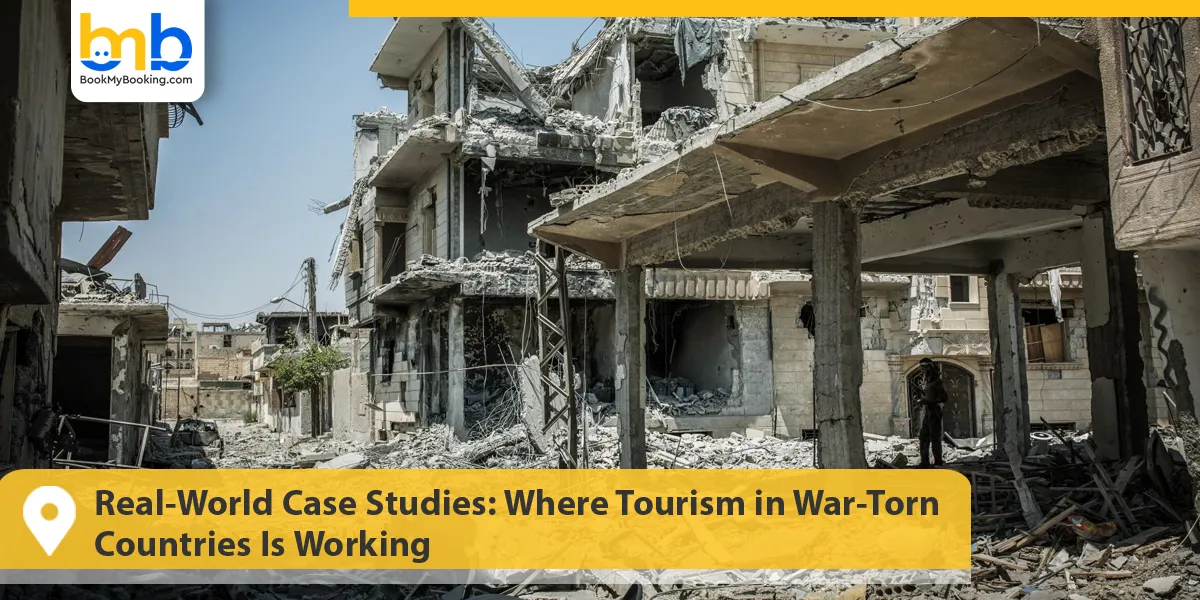
We must examine nations and communities that have previously traversed this path for those that have moved from tragedy to transformation and welcomed tourists to share not only their landscapes but also their stories, to comprehend the potential and power of post-conflict tourism fully.
Rwanda: Genocide to Global Model
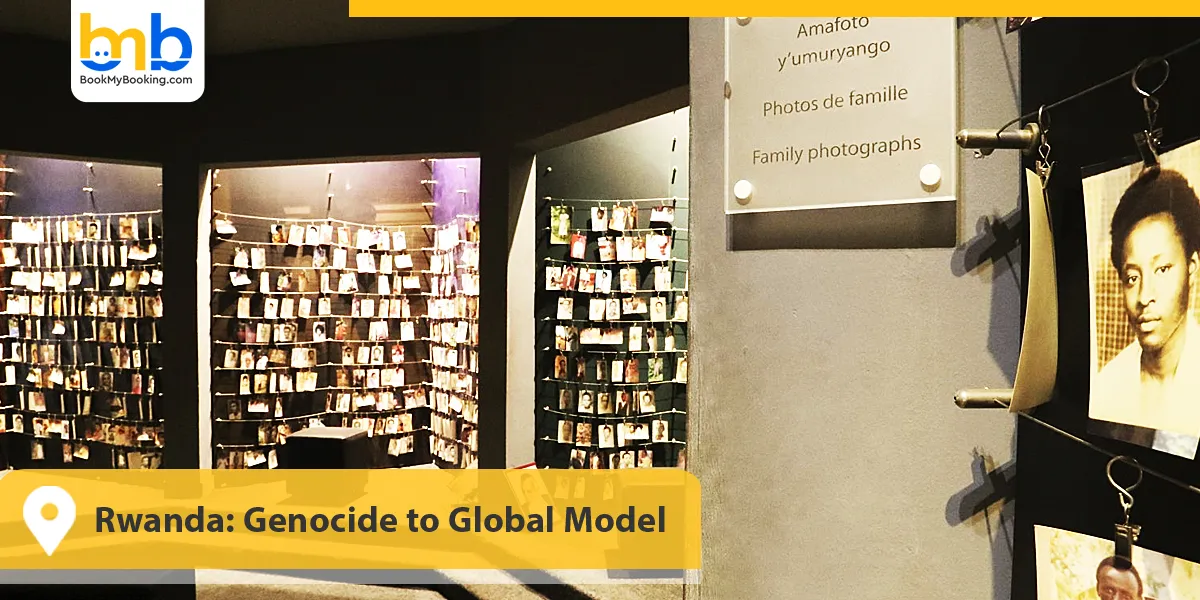
Few countries illustrate the promise of travel after war more profoundly than Rwanda. In 1994, the country was devastated by a genocide that claimed the lives of over 800,000 people in just 100 days. Today, Rwanda has not only rebuilt, it has redefined itself. The Kigali Genocide Memorial, which sits atop a mass grave of over 250,000 victims, is the heart of Rwanda's dark tourism destinations. Visitors walk through emotionally intense exhibitions, listen to survivor testimonies, and leave with a better understanding of horror and healing.
Yet, Rwanda is not frozen in that past. It is one of Africa's cleanest, safest, and fastest-growing countries. Tourists come for gorilla trekking in Volcanoes National Park, experience modern Kigali nightlife, and participate in community-led tours. Rwanda has successfully become a reborn travel destination, blending remembrance with resilience. This model is widely praised as a benchmark in ethical conflict tourism, where education, respect, and local benefit align. Tour operators ensure emotional sensitivity, and tourism revenue supports community development and conservation.
Colombia: Peace, Adventure, and Local Ownership
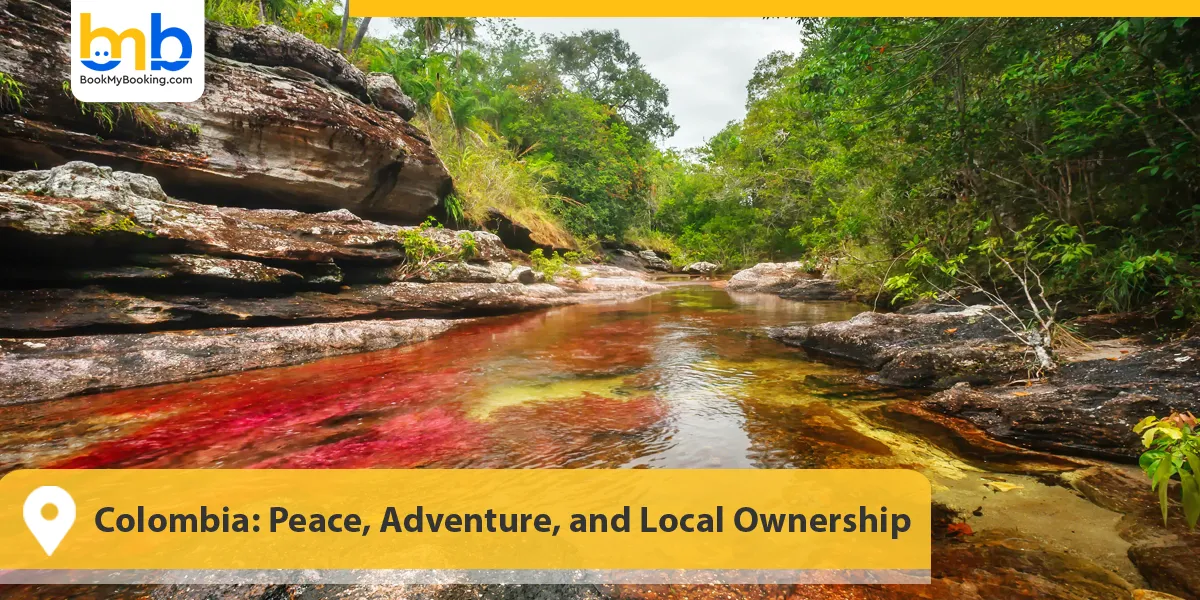
Colombia is now one of South America's most vibrant and welcoming places to visit after decades of armed conflict involving FARC guerrillas, paramilitaries, and government forces. Still, beyond Cartagena and Bogotá, the former conflict zones are seeing an exciting revival. Places like Mesetas and Caño Cristales, once red zones, are now eco-tourism hubs. Travellers hike lush trails once lined with landmines, paddle through turquoise rivers, and camp under stars in regions scarred by war. These tours are usually run by ex-combatants or community cooperatives, who are now forging new futures through tourism.
This is post-war economic recovery tourism in action. The World Tourism Organisation has acknowledged Colombia's efforts as a model for how tourism can foster travel for peacebuilding. Tourists gain unforgettable memories; locals gain employment, dignity, and purpose. Colombia's story also introduces one of the most delicate elements of this trend: trust. When visitors choose to explore areas once defined by violence, they send a powerful message that people can change and places can too.
Ukraine: Real-Time Reflection in a Conflict Zone
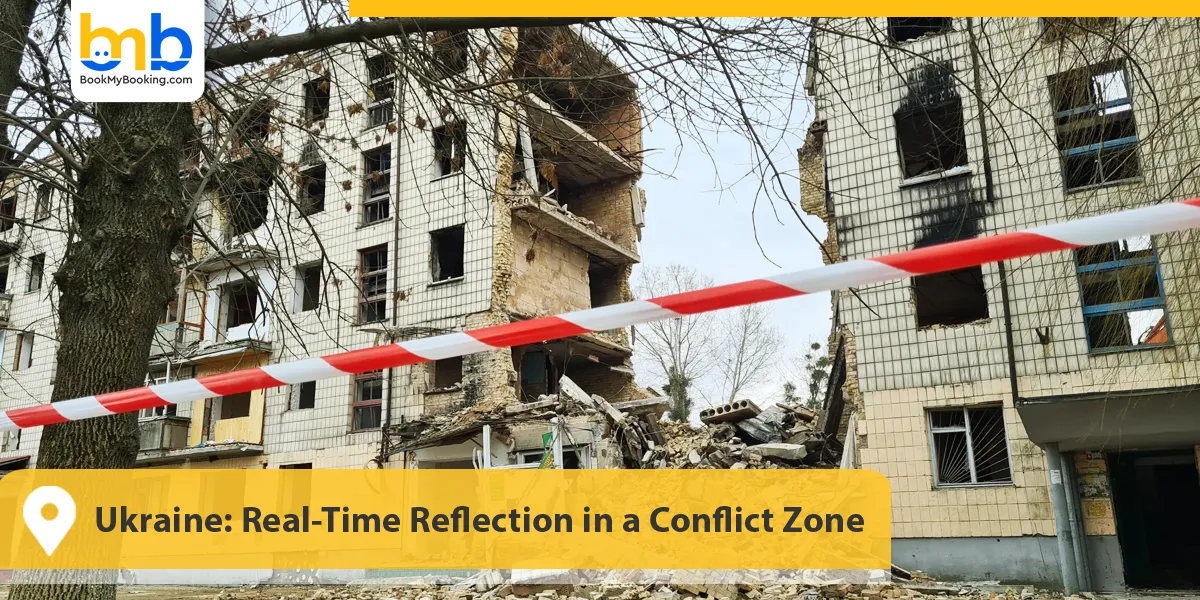
Ukraine represents a unique case of war tourism taking place while the conflict is still ongoing. Since the full-scale invasion by Russia in 2022, cities like Kyiv, Irpin, and Bucha have seen destruction—but also an influx of journalists, aid workers, and now, cautiously, tourists. Tour operators like Visit Ukraine offer curated city tours of war-hit areas, showcasing devastation and resilience. You can explore a bombed apartment block, a field hospital museum, or memorial sites to civilians killed in the early months of the war. Often, the guides are locals who lived through these moments, adding weight and humanity to each stop.
Though controversial, this early wave of former conflict zone tourism has seen support from Ukrainians who want the world to witness what happened and what's still happening. Revenue helps local economies, while the presence of foreign tourists draws media attention and solidarity. Still, this form of trauma-informed tourism raises ethical questions. Is it safe? Is it too soon? Most operators know this tension and build their itineraries around safety, community involvement, and education, not sensationalism. This careful balance is what defines responsible dark tourism.
Lebanon: Conflict, Memory, and Cultural Pride
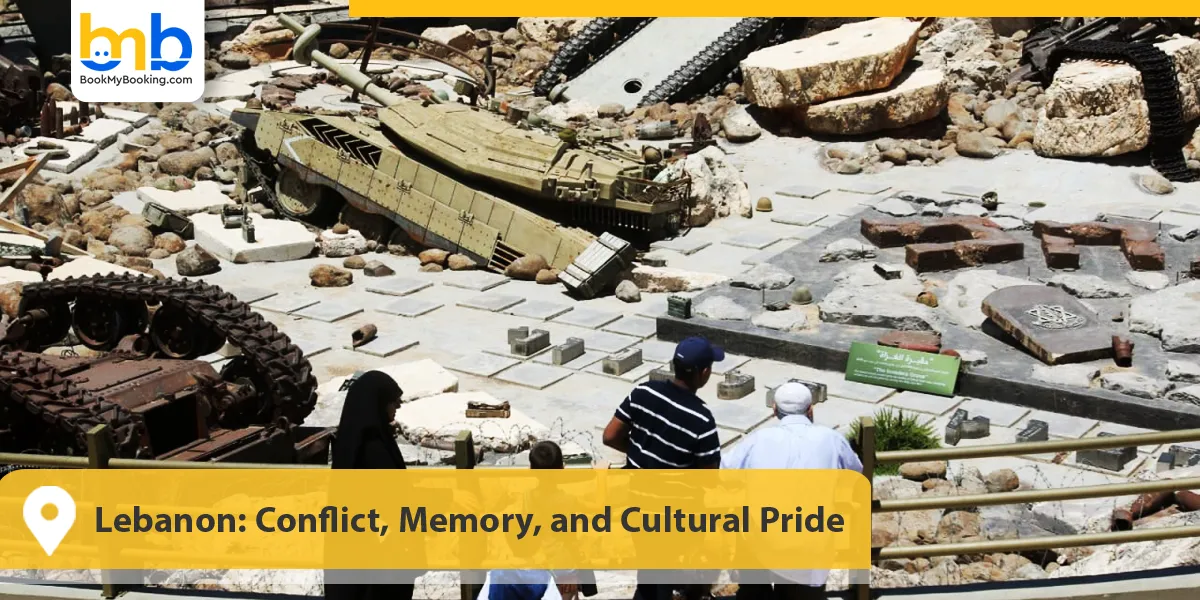
In Lebanon, dark tourism hotspots take on a uniquely political tone. The Tourist Landmark of the Resistance, known as the Hezbollah Museum in Mleeta, offers visitors a dramatic walkthrough of guerrilla warfare, underground tunnels, and wartime weapons. For some, it's a controversial display of military power. For others, it's a form of transformative war history trip, a chance to understand the Middle East conflict from a Lebanese perspective. Either way, it draws thousands annually and plays a central role in Lebanon's domestic tourism efforts.
Elsewhere, Lebanon promotes cultural festivals, mountain hikes, and famous cuisine as part of a broader recovery plan. Authorities are banking on tourism to revive the economy, especially from the Gulf, where high-spending visitors are now encouraged to return to Beirut. It's a conscious effort to move from scars to celebration, transforming tourism in war-torn countries into a force of unity and revival.
Sri Lanka: North Awakens from Civil Silence
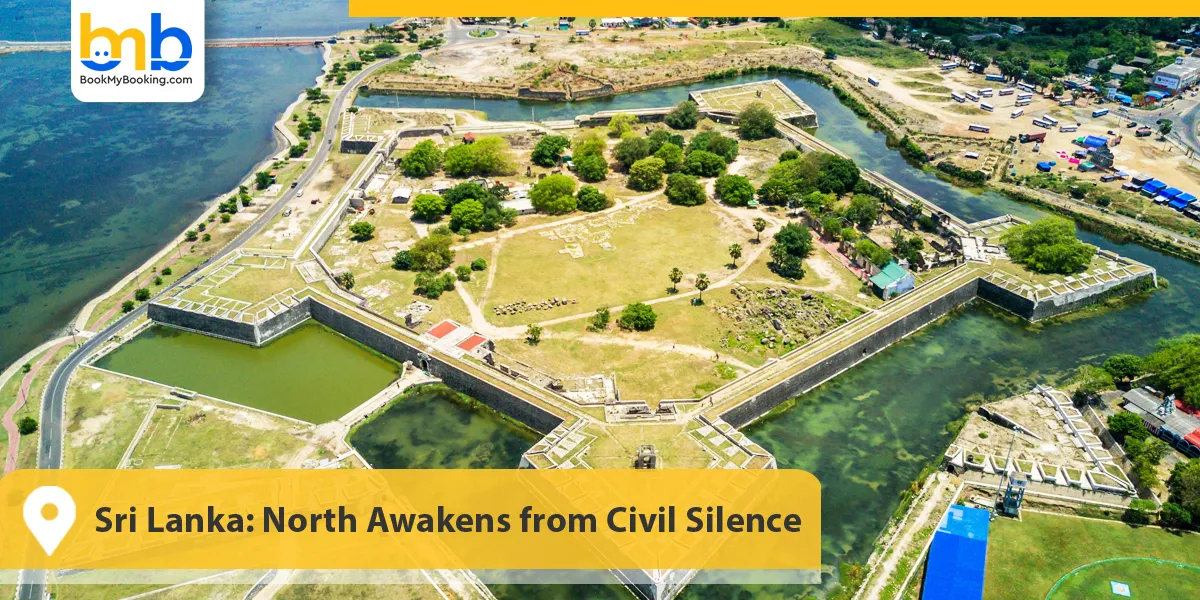
After 26 years of civil war, Sri Lanka's northern provinces, particularly Jaffna and Kilinochchi have rejoined the tourism map. Once cut off from the rest of the country, these areas now welcome visitors curious about Tamil culture, war history, and natural beauty.
Jaffna Fort, war memorials, and local libraries have become key stops on itineraries. Community-based tourism projects help residents earn money and share their unique perspectives. Visitors not only see the remnants of war but also the reinvention of daily life in places that were, not long ago, silent. It's a clear case of travel to former war zones contributing to national unity. By bridging north and south, war and peace, this form of ethical travel to former battlefields becomes a symbol of reconciliation, one tourist at a time.
Your War Zone Travel Guide: Advice for Travel to Former War Zones
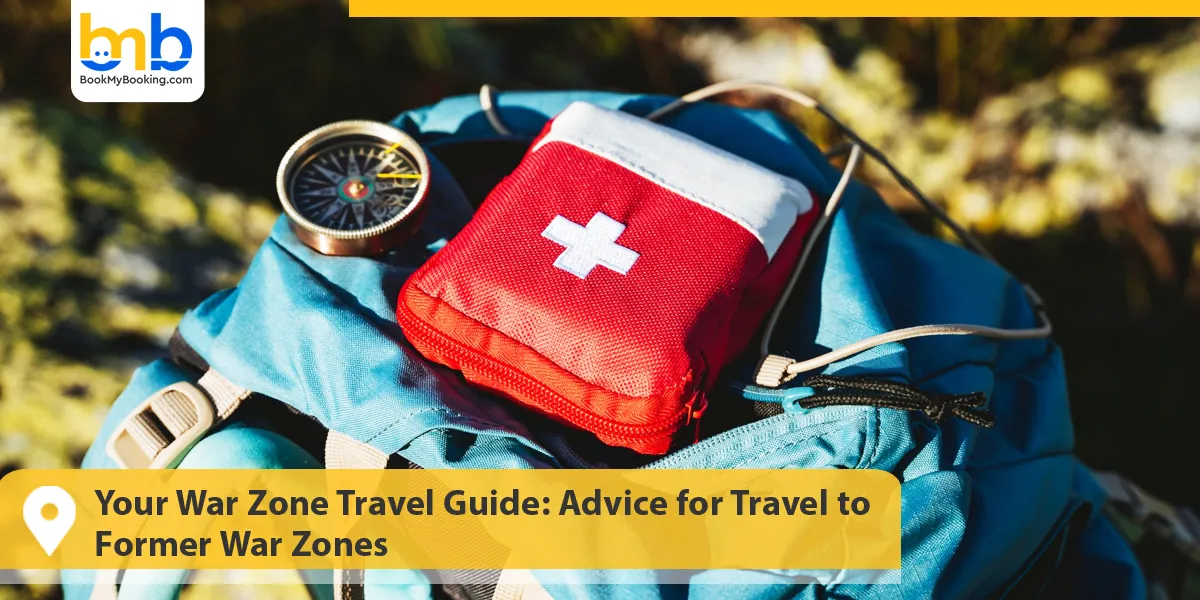
So, you're intrigued by visiting a place with a complicated past. But how do you do that responsibly? Exploring former battlefields and post-war cities is about reflection, education, and engaging with history in a respectful way. Hence, here is the guide you can follow for safe travel.
- Research Thoroughly Before You Go
Not all travel to former war zones is the same. Some countries have spent years rebuilding and are well-equipped for tourism (e.g. Vietnam, Cambodia, Colombia). Others are still emerging from instability and may have limited infrastructure, ongoing tensions, or unresolved trauma. This will help you show up informed and respectful. The more you know, the more meaningful your journey becomes.
Always check:
- Government travel advisories (UK FCDO, US State Department, etc.)
- Entry requirements, especially in post-conflict areas
- Local customs and recent political developments
- Choose Responsible Operators
You must look for an organisation with clear ethical guidelines and partnerships with NGOs or memorial institutions. Operators in Ukraine, for example, have strict safety protocols and often donate part of their income to humanitarian causes, a model of responsible dark tourism. The key to safe war zone tours is working with organisations that:
- Hire local guides (preferably survivors or historians)
- Contribute a portion of profits to community recovery
- Offer context and structure, not voyeuristic photo stops
- Are transparent about risks and expectations
- Pack Sensitivity Alongside Your Camera
You might be visiting a genocide memorial, a mass grave, or a bombed building. These are not places for selfies or loud conversations. This is a core part of trauma-informed tourism, travel that centres empathy and emotional awareness. Respect here is essential. Hence,
- Dress modestly and appropriately for memorials
- Avoid intrusive photos of locals unless invited
- Ask for permission before recording stories or interviews
- Reflect on Your Intentions
Why are you going? What do you hope to gain or understand?
Transformative war history trips are often uncomfortable, and that's the point. They push us to question our assumptions, confront the consequences of power, and listen to stories outside our own. This kind of discomfort is powerful as it changes people. But only if you're open to it. The best ethical conflict tourism trips leave you changed and not just entertained. Ask yourself:
- Am I here to learn or to say I've been here?
- Am I helping or just consuming someone else's pain?
- Will this experience inform my worldview?
- Support Post-War Economies
One of the best ways to contribute is to spend consciously. This is how you contribute to post-war economic recovery tourism in real-time. Your dollars matter, as in some regions, tourism now contributes more than 10–15% of local income, especially in rural or formerly isolated areas.
- Eat in local restaurants instead of international chains
- Buy crafts from survivor cooperatives
- Stay in community-run guesthouses or homestays
- Understand That Recovery Is Ongoing
Even decades after a war ends, the people and places involved may still be healing. Recovery isn't a straight line. You might see new hotels rising beside old ruins. You might speak with someone who lost everything and is still rebuilding. That's why ethical travel to former battlefields must include patience and presence. You're not there to fix anything. You're there to witness, honour, and listen.
- Know When Not to Go
Sometimes, the most ethical choice is not to visit. If a region is under active conflict, overwhelmed with aid workers, or explicitly asks tourists to stay away, respect that. This is especially important in active war zones like Gaza, parts of Sudan, or regions in Afghanistan where safety and ethics can't yet be guaranteed. True ethical conflict tourism is based on consent and safety for everyone involved.
The Bigger Picture: Emerging Travel Destinations and Healing Through Tourism
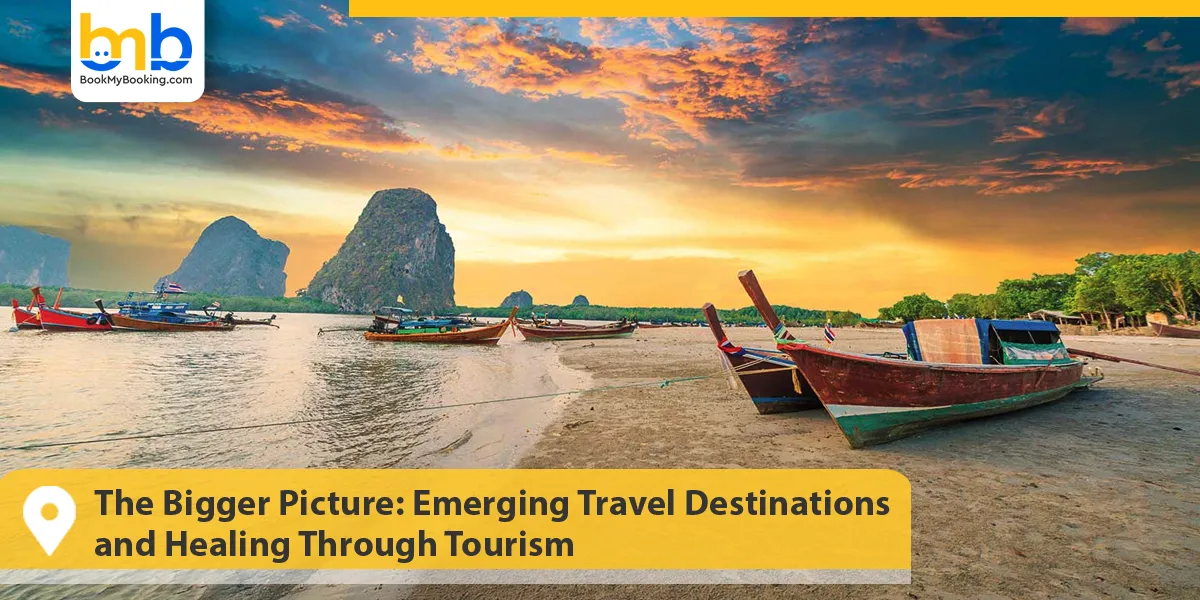
Once marked by conflict, many former war-torn regions are now at the forefront of a powerful transformation. Tourism is becoming a tool for communities to reclaim their identity, stimulate their economies, and shape their narratives.
- How Tourism Supports Post-Conflict Recovery?
Tourism plays a complex but vital role in helping post-conflict societies heal. It works not just on an economic level, but also socially and psychologically:
- Economic Revival: Tourism generates sustainable income through jobs in transport, guiding, hospitality, and local crafts, which is especially crucial in regions where formal employment opportunities are scarce.
- Community Empowerment: Locals gain agency by telling their own stories, shifting the narrative from victimhood to resilience.
- Cultural Reconstruction: War often erodes cultural identity; tourism revives it by preserving and showcasing traditions, cuisine, music, and monuments.
- International Reintegration: An influx of visitors builds soft diplomacy and fosters a sense of normalcy, boosting international perception and investment.
- Tourism as a Medium for Reconnection and Empathy
Tourism in former war zones offers travellers stories. When visitors engage with survivors, walk through rebuilt neighbourhoods, or participate in local customs, they foster an emotional exchange that's human, not transactional. These interactions replace assumptions with understanding, statistics with faces. This form of War tourism isn't passive; it's participatory. It allows the traveller to witness a region's resilience firsthand, and in doing so, becomes part of its healing process.
- Reframing Narratives: From Ruins to Renewal
A key part of recovery is reclaiming the narrative. Rather than being permanently defined by their tragedies, these destinations are learning to present their histories in ways that honour the past but emphasise strength, survival, and hope. This narrative shift attracts travellers seeking beauty, leisure, depth, humanity, and truth.
- Museums and memorials are shifting from focusing solely on loss to emphasising lessons learned.
- Guided tours are designed to educate, not exploit, with local voices leading the conversation.
- Art, architecture, and festivals are emerging as expressions of survival and cultural pride.
- A Changing Industry: The Rise of Ethical, Impactful Travel
The demand for more meaningful and responsible travel is influencing how post-conflict tourism is shaped:
- Traveller Expectations Are Evolving: More tourists choose destinations based on values, not just visuals. They want to support communities rebuilding their futures.
- Local Voices Are Leading: Guided experiences are increasingly offered by residents, veterans, and survivors, ensuring authenticity and ownership.
- Platforms Are Adapting: Travel startups and agencies collaborate with local storytellers, while NGOs and governments fund community-based tourism.
- The Global Implication: A Blueprint for Healing
What's happening in these former war zones isn't isolated. It offers a model for other regions emerging from crisis, whether due to civil unrest, natural disaster, or displacement.
- Communities recognise that shared pain can create a shared purpose.
- Visitors are realising that travel can be an act of solidarity.
- The global travel industry is waking up to the idea that every destination holds stories that matter.
The Role of Social Media in Reframing War Tourism
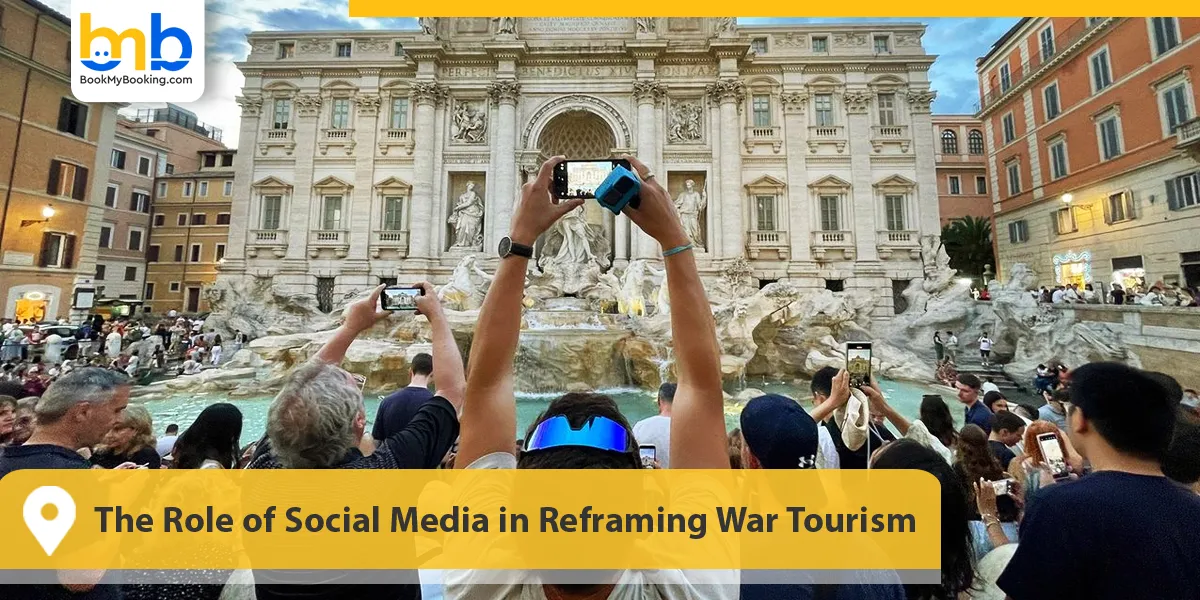
In today's digital age, social media plays an outsized role in shaping how we perceive destinations, especially those that were once off-limits or associated only with tragedy. Platforms like Instagram, TikTok, YouTube, and even podcasts are helping reshape narratives around war tourism and dark tourism hotspots, turning them into sites of learning, empathy, and responsible travel inspiration.
- Amplifying Authentic Stories
Social media gives survivors, local guides, and communities a global stage to share their stories in their own words. This direct storytelling breaks through stereotypes, creating a more nuanced understanding of travel to former war zones. This shift encourages ethical conflict tourism, where travellers are better informed and more sensitive to the complexities of these destinations. Rather than third-party accounts or sensational headlines, audiences get to see:
- Personal testimonies
- Day-in-the-life videos
- Behind-the-scenes perspectives on memorial sites
- Cultural events that celebrate resilience, not just remembrance
- Creating Virtual Bridges Before Physical Travel
Social media is the first introduction to post-conflict tourism destinations for many potential tourists. Virtual tours, live Q&A sessions with guides, and immersive storytelling offer a "soft landing" that builds empathy and respect before setting foot on the ground. This pre-exposure helps set traveller expectations and promotes responsible dark tourism practices, ensuring visitors approach with respect rather than curiosity that borders on voyeurism.
- Influencers and Thought Leaders Driving Change
A new wave of travel influencers and content creators is focusing on unusual travel destinations with an emphasis on history, culture, and social impact. Their content often balances the raw realities of conflict with the hope and progress tourism can foster.
These creators:
- Collaborate with local communities to spotlight authentic experiences
- Educate followers about the importance of trauma-informed tourism
- Encourage their audiences to think critically about the ethics of visiting former conflict zones
- Advocate for safety and respect, highlighting safe war zone tours
- Challenges and Responsibilities of Sharing
The travel community - content creators, tourists, and platforms themselves bears responsibility to promote ethical travel to former battlefields and amplify the voices of those directly affected by conflict. While social media offers tremendous potential, it also presents risks:
- Oversimplifying or glamorising painful histories
- Encouraging insensitive behaviours (e.g., inappropriate selfies at memorials)
- Spreading misinformation or ignoring local sensitivities
- The Future: Social Media as a Tool for Peacebuilding
As narratives grow richer and more responsible, social media has become a platform for meaningful global connection. Looking ahead, social media can continue to be a powerful force for travel for peacebuilding by:
- Connecting tourists and survivors in dialogue
- Supporting fundraising and community projects
- Promoting intercultural exchange and mutual understanding
- Building global awareness around the impact and importance of post-war economic recovery tourism
Walking with Respect: The Last Word on Tourism in War-Torn Countries
Visiting former war zones and dark tourism hotspots is a journey. It calls for empathy, responsibility, and a willingness to listen deeply. These reborn travel destinations stand as living testaments to human resilience, reminding us that hope and renewal are possible even after devastation. Through ethical conflict tourism, travellers contribute to post-war economic recovery, supporting communities that have endured unimaginable hardship.
So, as you consider your next journey, remember: these destinations invite you not just to witness, but to connect, reflect, and grow. In doing so, you become part of a global movement that turns scars into stories—and war zones into must-visit destinations for the mindful traveller.


